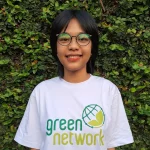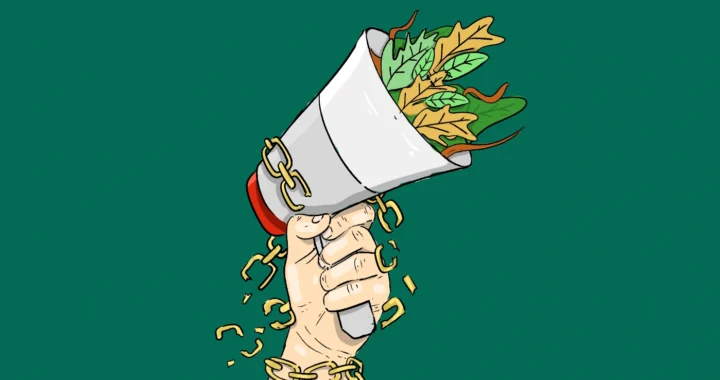A New Interactive Map for New Zealand’s Biodiversity Restoration

The tūī bird, a native species to New Zealand. | Photo: Andrea Lightfoot on Unsplash.
New Zealand is home to approximately 80,000 species of endemic biodiversity. Unfortunately, the number of these native species has been gradually shrinking due to pressure from invasive species, human activities, and climate change. On top of that, minimal data and information also hinder the conservation process. New Zealand’s BioHeritage National Science Challenge launched an interactive map to understand New Zealand’s biodiversity condition better.
New Zealand’s Biodiversity
One-third of New Zealand’s biodiversity species are listed as threatened and at risk. For instance, data from New Zealand’s Department of Conservation shows that 71 bird species were listed as threatened, and 107 were at risk out of 487 taxa examined. This includes native birds kākāpō (Strigops habroptilus) and kea (Nestor notabilis). Land use change, high levels of water pollution, and predatory species contributed to New Zealand’s decline in biodiversity.
Implementing practical conservation efforts requires a thorough understanding of biodiversity’s condition. In this case, assessment and updated data become crucial tools. However, data gaps remain for New Zealand’s biodiversity, with roughly one-third of named species still listed as data deficient. The Ecosystem Restoration Map launched by Eco-index aims to bridge this gap.
Eco-index Interactive Map
Eco-index is a research program under New Zealand’s BioHeritage National Science Challenge. The program aims to address Aotearoa New Zealand’s biodiversity decline by enhancing efforts and coordination to protect, restore, and connect native ecosystems.
Under the program, researchers and scientists developed an interactive map with inputs from relevant stakeholders, including Indigenous leaders, council representatives, and industry advocacy groups. The Ecosystem Restoration Map contains information on the natural range of areas where a species has naturally lived and the restoration priority areas where local biodiversity is most at risk. The goal is to achieve a minimum land coverage of 15% of each native ecosystem in the country.
“In science, it is known that the game changes for biodiversity if we can safeguard at least 15% of the expected natural range of each native ecosystem,” said Dr Kiri Joy Wallace, co-lead of Eco-index. “In some areas, reaching 15% requires complete reconstruction of native ecosystems through ecological restoration efforts like tree planting and non-native species removal. In areas where 15% native land cover already exists, protecting those existing ecosystems is key.”
Bridging the Information Gap
The Ecosystem Restoration Map supports national efforts and policies to safeguard Indigenous Biodiversity. It invites the government, businesses, Indigenous communities, and other relevant stakeholders to better understand New Zealand’s biodiversity condition by enabling them to share information on every ecosystem in every catchment of the country. The map also hopes to bridge the information gap surrounding biodiversity in New Zealand.
“At a national level, there are challenges around biodiversity data collection, access, and sharing,” said Sam Rowland, Programme Manager – Nature, Systems Change at the Sustainable Business Network and co-chair of the Eastern Whio Link. “This map is a good start at fixing those issues, and we’re excited to utilize this information for biodiversity strategies and planning.”
Editor: Nazalea Kusuma

Join Green Network Asia – An Ecosystem of Shared Value for Sustainable Development.
Learn, share, network, and support Green Network Asia’s movement to create positive impact for people and the planet through our public education and multi-stakeholder advocacy on sustainability-related issues and sustainable development across the Asia Pacific and beyond.
Become a Member Now
Kresentia Madina
Madina is the Assistant Manager for Digital Publications at Green Network Asia. She graduated from Universitas Indonesia with a bachelor's degree in English Literature. She has three years of professional experience working on GNA international digital publications, programs, and partnerships particularly on social and cultural issues.


 The Inequality-Pandemic Cycle amid Rising Global Vulnerability
The Inequality-Pandemic Cycle amid Rising Global Vulnerability  Climate Change and Poverty: Looking into the Overlapping Issues
Climate Change and Poverty: Looking into the Overlapping Issues  Gen Z’s Youth Climate Activism Cannot Ignore Colonialism
Gen Z’s Youth Climate Activism Cannot Ignore Colonialism  Practicing Gift Economy: How We Can Foster Community Bond Through Sharing
Practicing Gift Economy: How We Can Foster Community Bond Through Sharing  Strengthening the Role of Trade Unions to Achieve Social Justice
Strengthening the Role of Trade Unions to Achieve Social Justice  Turning Agricultural Waste into Biomaterials
Turning Agricultural Waste into Biomaterials